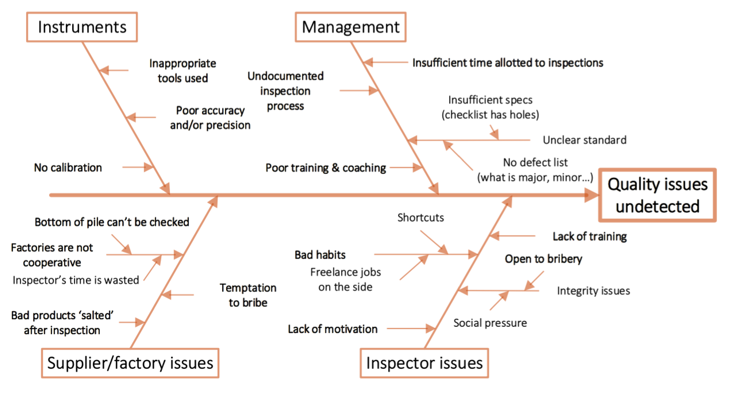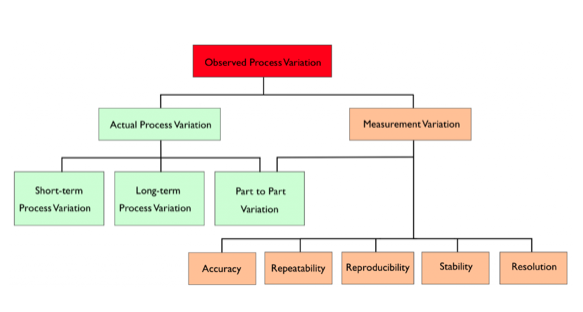Most inspectors go to factories with a digital camera and a laptop. They might also bring a measurement tape and a barcode scanner, but they rely on the factory to provide all the remaining equipment.
Obviously they can’t bring all the equipment themselves – sometimes they might need a truck! But they should pay a little more attention to the tools they use. Otherwise, it’s ‘garbage in, garbage out’. The data collected might not be reliable.
SynControl have identified 3 recurring issues related to quality control inspection tools.

Let’s go though each of them one by one.
1. Using inappropriate quality control inspection tools
To take a simple example, rubbing a marking with a white cotton and alcohol is very different from using water. Or using a phone’s camera to read a barcode that will eventually be submitted to infrared barcode readers in stores. Or using a fake Pantone book (there are plenty of them in China) to confirm a color.
This type of mistake is more common than people think. If you don’t maintain a good database of your inspectors’ tools, with a link to the checklists they have to follow on each product they will inspect, your company probably messes this up, too.
2. Not calibrating the tools
There are actually two issues here. Let me unpack them.
First, your team’s own quality control inspection tools should be calibrated regularly. You might be able to do this in-house if you have master standards, or by sending the tools to an external laboratory.
Second, the manufacturer’s equipment should also be calibrated. For some very important checkpoints, your staff should systematically check the calibration label and related documentation.
There are also simple things that make a big difference. Need to use a digital weighing scale? There is usually a button to get it to re-calibrate to the ‘zero’ point.
3. Using tools that have poor accuracy and/or precision
Let’s take the example of the digital weighing scale again. You should make sure it indicates zero in ‘no load’ mode, but also a certain value (say, 20 grams) when you weigh your usual pen. If you see 25 grams, you know there is a BIG issue!
I won’t cover the concepts of accuracy, precision, bias, etc. here. MSA (Measurement Systems Analysis) is a rich field of study, as Gemba Academy summed up in the chart below.

If measurement collection is quite important when checking your products, you need to pay attention to the 5 boxes in orange color. Best practices are not very complicated to apply, but they take a certain discipline.
Some companies go a great job designing QC fixtures that allow inspectors to check critical-to-quality points quickly and with a very low risk of misuse. But that’s only applicable to products that will have to be checked many times (typically, auto parts, with a lifetime of several years and high expected volumes).
And of course, the very best is to set up the right process control in order to minimize variation in the product’s attributes… That’s another story but again it all relies on gauges and other instruments.
Did we just give you a headache about your quality control inspection tools? Lots of things to do? Wondering how to focus on the most important issues first? Leave a comment or send us a message and we’ll give you our opinion.


